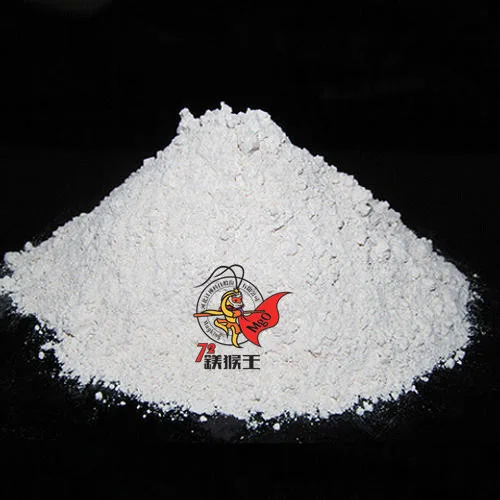Halogenated polymers, such as polyvinyl chloride (PVC), chlorinated polyethylene (CPE), and chloroprene rubber, are widely used in modern industry due to their excellent flame retardancy, chemical resistance, and electrical insulation properties. However, a critical challenge in processing these materials is the release of acidic by-products like hydrogen chloride (HCl), which can lead to degradation and affect long-term stability. Activated magnesium oxide (reactive magnesium oxide) has emerged as an effective acid scavenger to address these issues, providing both chemical stabilization and performance enhancement.
In this article, we explore the application of reactive magnesium oxide in halogenated polymers, its working mechanism, specific use cases, key advantages, and comparisons with other acid scavengers.
Application Background
During the thermal processing of halogenated polymers—such as mixing, extrusion, and calendering—elevated temperatures often cause the polymer chains to release acidic gases. For example, PVC commonly emits hydrogen chloride (HCl), initiating autocatalytic degradation that leads to discoloration, brittleness, and loss of mechanical strength.
To counteract this, acid scavengers are incorporated into the formulation. Among them, activated magnesium oxide stands out for its high reactivity and fine particle size, which allows it to rapidly neutralize acidic gases and stabilize the polymer matrix. It’s particularly important in industries that require long-term material stability, such as wire & cable insulation, construction materials, and automotive parts.
Mechanism of Action of Active Magnesium Oxide
Neutralization of Acidic Substances
When halogenated polymers decompose, they often generate hydrogen halides like HCl. Activated magnesium oxide acts as a reactive base, neutralizing these acids through the following chemical reaction:
MgO + 2HCl → MgCl₂ + H₂O
This neutralization prevents acid-catalyzed degradation and extends the polymer’s service life. Compared to standard magnesium oxide, reactive MgO has a larger surface area and smaller particle size, allowing faster and more efficient acid neutralization.
Thermal Stabilization
Beyond acid neutralization, activated magnesium oxide contributes to thermal stabilization. It absorbs heat during processing, mitigating thermal stress and delaying the onset of decomposition. This makes it highly suitable for high-temperature manufacturing processes like extrusion and injection molding.
Synergistic Stabilization Effect
Activated magnesium oxide often works synergistically with other stabilizers, such as calcium-zinc stabilizers or organotin compounds. In such systems, MgO enhances the overall acid-scavenging capacity, allowing manufacturers to reduce the amount of heavy metals in the formulation, thus improving environmental compliance.
Application of Reactive Magnesium Oxide
PVC Cable Materials
In wire and cable insulation, reactive magnesium oxide helps maintain electrical integrity by preventing degradation of the PVC matrix. This ensures stable dielectric performance, mechanical flexibility, and long-term durability, especially in high-temperature or outdoor applications.
Soft PVC Products
For soft PVC used in hoses, artificial leather, and flooring, activated MgO enhances heat resistance and prevents yellowing caused by acid degradation. It also contributes to maintaining tensile strength and elasticity, which are crucial for soft and flexible materials.
Chlorinated Polyethylene (CPE)
CPE is used in roofing membranes, cable jackets, and rubber seals. During processing, it releases chlorine-based acids that must be neutralized. Activated magnesium oxide provides efficient acid scavenging and helps improve resistance to UV light, chemicals, and weathering.
Advantages of Active Magnesium Oxide
High Reactivity
Activated magnesium oxide features high surface area, small particle size, and rapid reaction kinetics, making it significantly more effective than standard MgO. It ensures fast neutralization during the critical early stages of polymer processing.
Versatility
Reactive MgO can be used in a wide range of halogenated polymers, including PVC, CPE, and chloroprene rubber. It’s suitable for both rigid and flexible formulations and can be applied across diverse industries—from construction to electronics.
Environmental Protection
By enabling the use of non-toxic stabilizer systems and reducing the need for heavy metals, activated magnesium oxide supports eco-friendly formulations. It also contributes to fire resistance due to its inherent flame-retardant properties.
Comparison with Other Acid Removers
| Acid Scavenger | Reactivity | Environmental Profile | Moisture Sensitivity | Thermal Stability |
|---|---|---|---|---|
| Activated MgO | High | Excellent | Moderate | Excellent |
| Magnesium Hydroxide | Medium | Good | High | Moderate |
| Calcium Oxide | Low | Moderate | Low | Poor |
- Activated magnesium oxide outperforms calcium oxide in both speed and completeness of acid neutralization.
- Compared to magnesium hydroxide, reactive MgO is less hygroscopic and has better high-temperature stability.
- While CaO may be cheaper, it is less effective and can leave residues that compromise product quality.
Conclusion
Activated magnesium oxide is a powerful, multifunctional additive for halogenated polymer systems. By neutralizing acidic degradation products, stabilizing thermal properties, and working in synergy with other stabilizers, reactive magnesium oxide significantly improves the performance and longevity of materials like PVC and CPE. Its high reactivity, environmental safety, and broad compatibility make it an ideal choice for demanding applications.
Whether you’re formulating cable insulation, flexible PVC, or weather-resistant CPE, incorporating activated magnesium oxide into your product can provide the stability and performance you need.
Need high-quality reactive magnesium oxide for your application? Contact us now to discuss your technical requirements or request a sample. Our experts are ready to support your formulation challenges.
FAQs
What makes activated magnesium oxide different from regular magnesium oxide?
Reactive magnesium oxide has a finer particle size and higher surface area, which makes it much more reactive. This allows it to neutralize acids more efficiently and contribute to better thermal and chemical stability.
Does activated magnesium oxide affect the color or transparency of the final product?
Depending on the amount and particle size used, reactive MgO may slightly influence the color or transparency of transparent PVC materials. However, in most applications, this effect is minimal and can be managed with proper formulation adjustments.
How should activated magnesium oxide be stored?
Activated magnesium oxide is hygroscopic and should be stored in airtight containers in a dry environment. For moisture-sensitive formulations, additional drying agents or protective packaging may be recommended.


